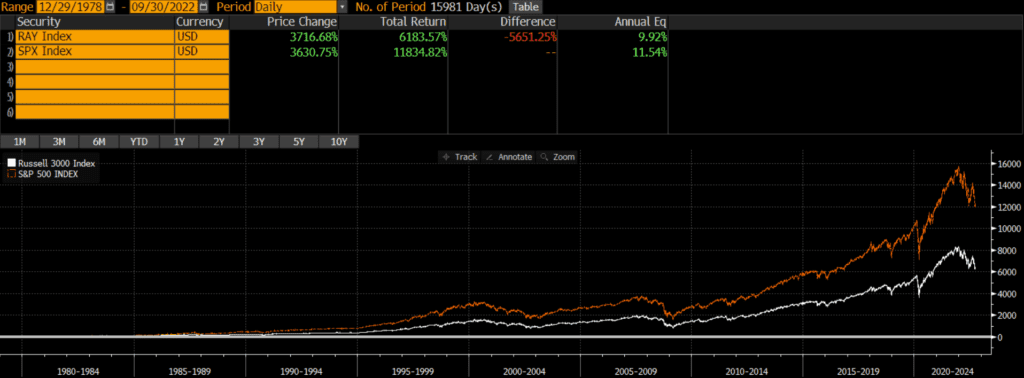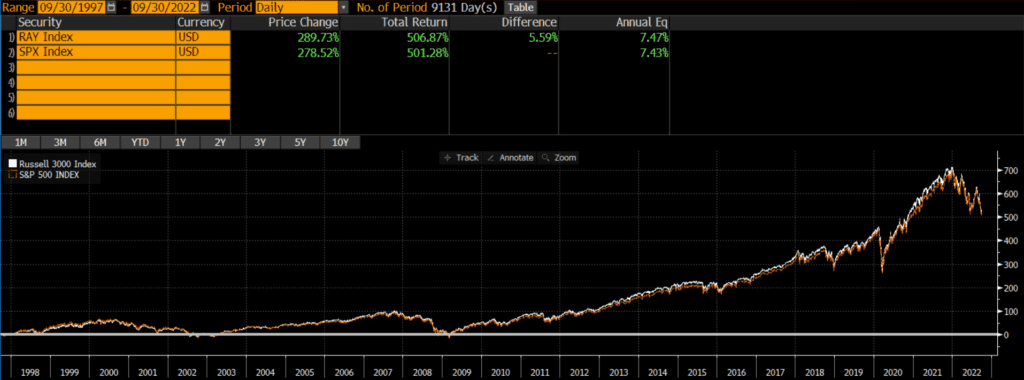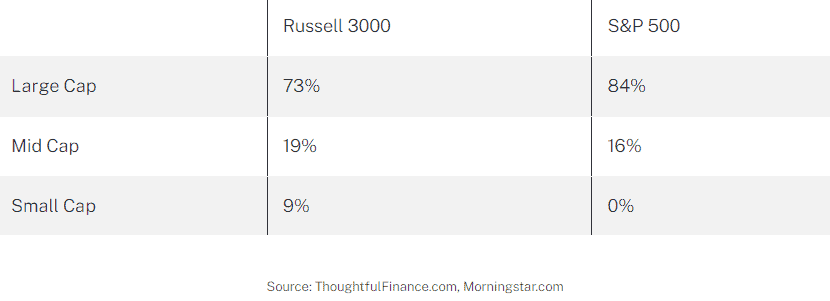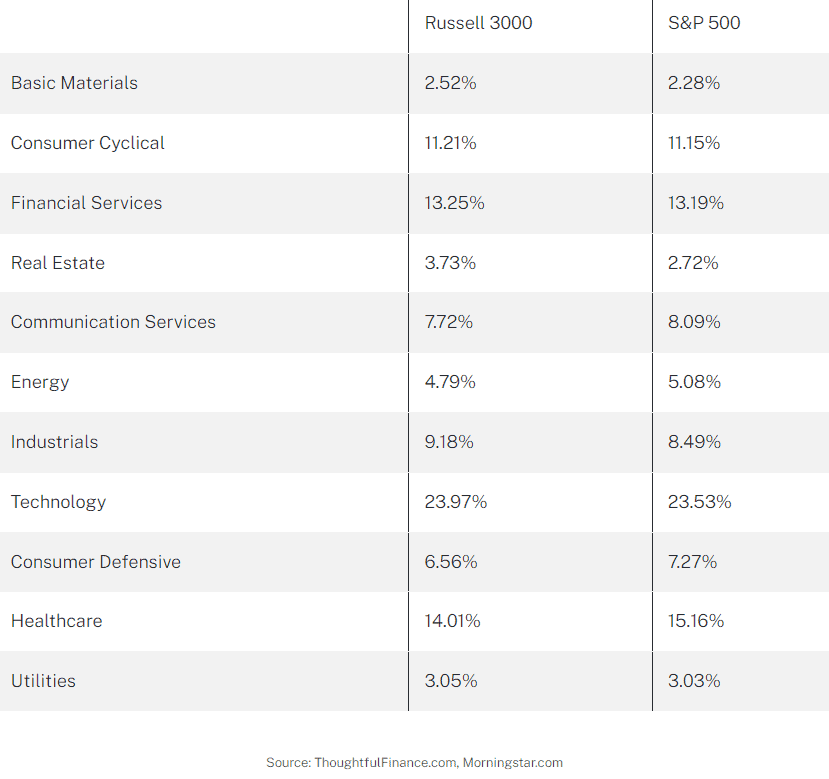The S&P 500 and the Russell 3000 are two of the most popular indices of US stocks. Many portfolios and investment vehicles are benchmarked to each index as both are representative of the US stock market.
The primary difference between the two indices is that the S&P 500 is a large-cap index, while the Russell 3000 is a total market index that includes mid-cap and small-cap stocks. The below charts of the Russell 3000 vs S&P 500 performance illustrate that the S&P 500 has outperformed the Russell 1000 by a wide margin since its inception. However, returns over the past 25 years have been nearly identical. This is extremely similar to the findings in my analysis of the Russell 1000 vs S&P 500.
A quick note that investors cannot invest directly in an index. These unmanaged indexes do not reflect management fees and transaction costs that are associated with an investable vehicle, such as the State Street SPDR S&P 500 ETF (symbol: SPY) or the iShares Russell 3000 ETF (symbol: IWV). A reminder that these are simply examples as this site does NOT provide investment recommendations.
Historical Performance: Russell 3000 vs S&P 500
Similar to our analysis of the Russell 1000 vs S&P 500, the time period is very important when evaluating the performance of the Russell 3000 vs the S&P 500. The below chart of the Russell 3000 vs S&P 500 shows that the S&P 500 outperformed by a wide margin (since the Russell index’s inception in 1978). In fact, the difference is about 1.6% annually.

However, it is a completely different story if we graph the Russell 3000 and S&P 500 over the past 25 years. The two indices perform nearly identically with only a .04% difference annually!

Composition Differences: Russell 3000 vs S&P 500
Both the Russell 3000 and the S&P 500 are broad-based indices that represent the US equity markets. As of Q3 2022, the indices have identical geographic exposures, similar sector weights, and slightly different market cap exposures.
Geography
Both the Russell 3000 and S&P 500 only include the stocks of US-domiciled companies.
Market Capitalization
The biggest difference between the two indices is the market capitalization of constituents. The S&P 500 includes large-cap and mid-cap stocks, while the Russell 3000 is more of a total market index and includes large-, mid-, and small- cap stocks. However, both indices are market-cap weighted, so the composition is largely similar.

Sectors
The sector exposure of the two indices is roughly similar, which is not surprising given that they are both broad-based indices.

Final Thoughts on Russell 3000 vs S&P 500
Investors cannot invest in indices directly and should do their own research before deciding to invest in a fund that tracks either index. When deciding between the Russell 3000 and S&P 500, investors should determine if they primarily want large-cap exposure or more of a total market exposure.
With such a small performance difference though, the costs of investable index strategies may be a larger consideration than which benchmark to select. Sometimes benchmark selection matters quite a bit, although that does not appear to be the case between these two indices. Perhaps the biggest consideration beyond the usual costs, taxes, etc, is the liquidity of a small-cap exposure in the Russell 3000. There is a theoretical diversification benefit of holding more assets, but the question is at what cost?
Further Reading
As mentioned in the intro, the above analysis of the Russell 3000 vs S&P 500 is extremely similar to my analysis of the Russell 1000 vs S&P 500. For more information about these two Russell indices are so similar (and arguably interchangeable for most investors), read my analysis of the Russell 1000 vs Russell 2000 vs Russell 3000.